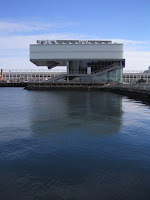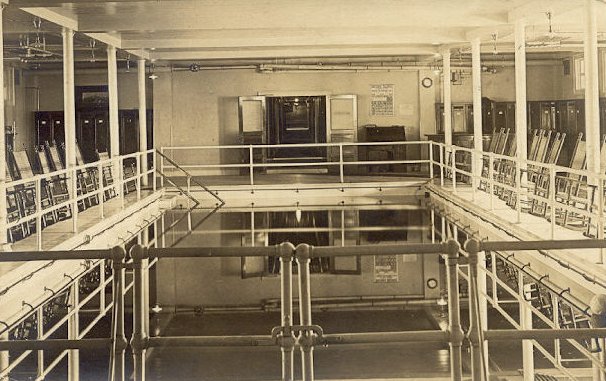 With four feet of fresh powder falling last week, it did not take much for me to accede to a friend’s invitation to Mad River Glen. Known for its challenging terrain, minimalist approach to snowmaking, and single chair, Mad River—“Ski it if you can,” blares their bumper sticker—is a simple and traditional resort. It’s the kind of place where ownership is cooperative, snowboarders aren’t allowed, and most people in the lift lines are old friends. Access to one of the few slopeside condos is not something to be taken lightly.
With four feet of fresh powder falling last week, it did not take much for me to accede to a friend’s invitation to Mad River Glen. Known for its challenging terrain, minimalist approach to snowmaking, and single chair, Mad River—“Ski it if you can,” blares their bumper sticker—is a simple and traditional resort. It’s the kind of place where ownership is cooperative, snowboarders aren’t allowed, and most people in the lift lines are old friends. Access to one of the few slopeside condos is not something to be taken lightly.As post-dump hordes assembled—the ticket office closed at 10:30—Mad River’s minimalist approach backfired rather spectacularly. The power in the valley went down, leaving only one lift working on the entire mountain. This, the single chair, remained in service because it is so old that it actually runs on diesel. Thousands of people were forced to wait up to an hour to get to the top of the mountain. Mad River did give out vouchers for a free day of skiing to those who called it a day before three, but I missed the cut after foolishly trying to maximize my time on the slopes and getting stuck in “Upper Glades” around 2:55.
So on Sunday, we ditched for the more intrepid slopes of Camel’s Hump, which is true skiing backcountry. Unlike the New Hampshire ridges that I am more familiar with, Vermont seems to have many open forests high on its mountains—beech and birch glades instead of dense Spruce-Fir forests. Whatever the reason, it makes for superb skiing. Only without a lift, you’re in charge of getting yourself to the top.
The most efficient way is to strap a pair of skins to the bottom of your skis and “skin” up. The hairs on the skins angle so that ski can move forward but not back. For the original enthusiasts of ski touring, as the sport is known, skins were just that—an animal product—useful for getting around (or after animals) in the winter. Even today, the sport is far more popular in Europe than in America, though it is growing rapidly here. These days, however, synthetic fabrics have replaced animal skins.
In America, skinning has long been the province of telemark skiers, whose releasable heel allows them to go uphill. The heyday of New England telemark skiing was in the 1930s, when its cheapness and wholesome appeal led skiers to cut dozens of trails across New England. Weekend “snow trains” ran from Boston to New Hampshire, allowing urbanites access to the best skiing in the region, the crown jewel of which was, as it is now, Tuckerman’s Ravine (known as Tuck’s to any telly skier worth his salt). The Inferno, an insanely steep and extended run named for a similarly intense race in Murren, Switzerland (which still exists and is part of the World Cup circuit), ran for three years in this period. In 1939, Toni Matt, a young Austrian who, having never skied Washington before, took the Tuckerman headwall without turning and won, halving the previous record. He later said he felt lucky to be “nineteen, stupid, and have strong legs.”
In the postwar period, skiing began to catch on with mainstream America. Resorts cropped up all over New England, and with the convenience and accessibility of lifts, telemarking’s popularity declined in favor of fixed heel alpine skiing. Only a few die-hards, preferring the simple approach, kept the sport alive.
In recent years, that has begun to change. It is nothing unusual to see people skinning up the slopes of a New England resort; indeed, telemarking is growing exponentially. As people have grown tired of the commercial nature of downhill skiing, they are embracing the simple, stylish telemark alternative. The telemark turn, though slower than its alpine equivalent, is remarkably graceful and beautiful to watch, and it also provides more of a challenge and workout than alpine skiing.
Telemarking is growing suspiciously popular, however; among outdoor people, it is becoming a test of how hardcore one is. As alpine skiing has, telemarking will lose its mystique if its appeal changes from aesthetic to joining the bandwagon.
Practically speaking, telemarking gear isn’t the best way to get around in the backcountry. In Europe and Canada, alpine
 touring gear is the norm—this system combines the best aspects of telemarking and alpine skiing. With AT bindings, the heel releases for skinning uphill, but it also clips in for easier turns on steep downhills. The advantages over telemark gear are considerable: AT equipment tends to be lighter, safer in a fall (as Andrew McLean of telemarktips.com points out, AT skis have a mechanical release system, whereas the telly release system is biological—your ACL breaking), more efficient on the uphill and more controlled on the downhill, has boots better suited to crampons, and is easier to put on (step-in vs. bend down and attach). What AT skis lack in countercultural appeal, they make up for in functionality.
touring gear is the norm—this system combines the best aspects of telemarking and alpine skiing. With AT bindings, the heel releases for skinning uphill, but it also clips in for easier turns on steep downhills. The advantages over telemark gear are considerable: AT equipment tends to be lighter, safer in a fall (as Andrew McLean of telemarktips.com points out, AT skis have a mechanical release system, whereas the telly release system is biological—your ACL breaking), more efficient on the uphill and more controlled on the downhill, has boots better suited to crampons, and is easier to put on (step-in vs. bend down and attach). What AT skis lack in countercultural appeal, they make up for in functionality.But, to quote Mr. McLean again, “the beauty is in the thigh of the beholder.” Skiing, like so many sports, has a major image component to it, which extends to all aspects of the sport. My favorite, of course, is the language—I won’t ever be able to say the words “shred some gnar” or “wicked pow” without giggling. Freestyle skiers are adapting a badboy style which, promoted by ski porn, seems to be catching on, having first been adopted by snowboarders from skateboarders, and now a few skiers seem to be getting in on the act.
But that sort of things isn’t going away anytime soon, and if telemark skiing brings back the snow train and gets skiers out of resorts and into the backcountry, I’m all for it. Up at Camel’s Hump, the gnar was four feet deep, and we got in three runs before getting lost and having to break trail all the way back up a shoulder of the mountain. We had more time to admire the snow-laden trees in the backcountry, and the downhill, complete with wild shrieks, attempts at grinding on fallen trees, and the difficulty of extricating ourselves from several feet of powder, was all the more exhilarating for the climb.














